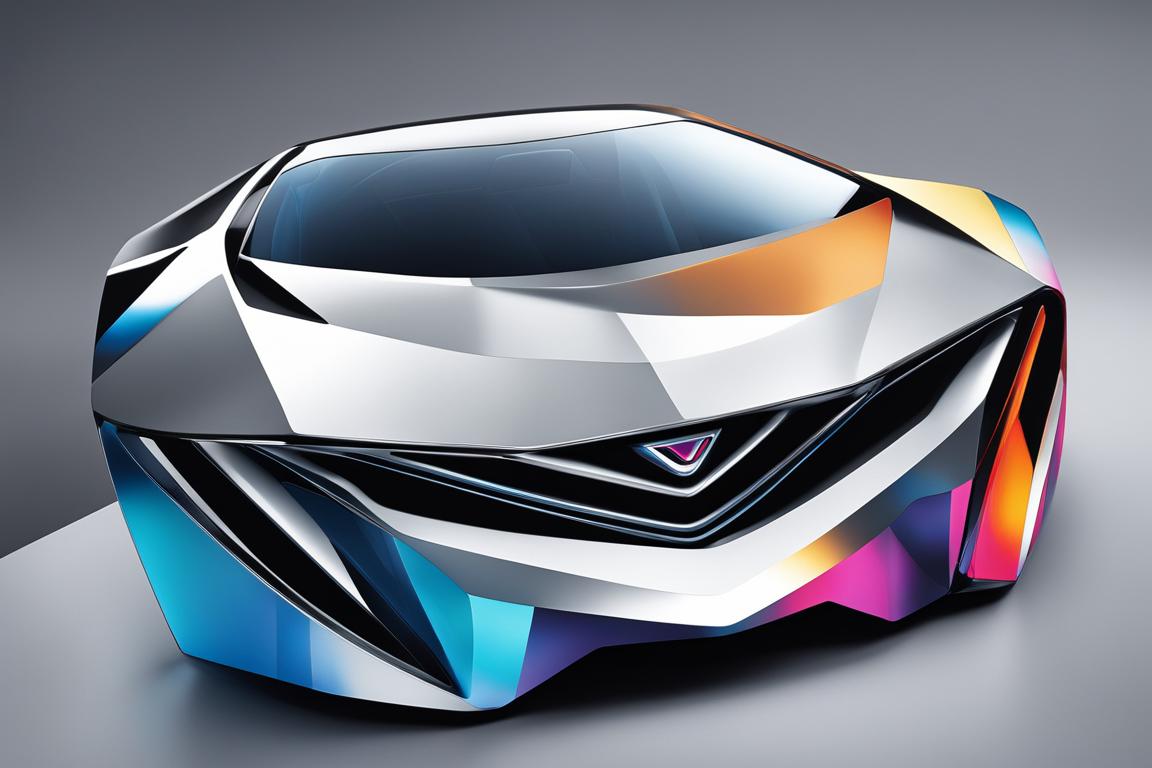Welcome to our article where we delve into the intriguing world of VAPA. Have you ever wondered what VAPA stands for? Or what exactly is its meaning and abbreviation? If you’re curious, you’ve come to the right place! In this article, we will provide you with an in-depth understanding of VAPA, its definition, and its importance in various industries, including the automotive sector.
But first, let’s uncover the mystery of VAPA. The abbreviation VAPA stands for “Variable Area Power Assist.” This term refers to a technology used in power steering systems, which provides varying amounts of assistance based on the driver’s input. VAPA plays a crucial role in enhancing vehicle handling and control, making it an essential component in modern vehicles.
Table of Contents
ToggleKey Takeaways:
- VAPA stands for “Variable Area Power Assist.”
- It is a technology used in power steering systems.
- VAPA provides varying amounts of assistance based on the driver’s input.
- It enhances vehicle handling and control.
- VAPA is commonly used in the automotive industry.
Understanding the VAPA Acronym
The VAPA acronym, which stands for Variable Area Power Assist, is primarily associated with power steering systems in vehicles. This advanced technology plays a pivotal role in ensuring smooth and precise steering, adapting to the driver’s input and providing the perfect amount of assistance based on the driving conditions.
With VAPA, drivers experience improved control over their vehicles, allowing for enhanced maneuverability and responsiveness on the road. The technology dynamically adjusts the power assist, making steering effortless while still maintaining the desired level of control. This results in a comfortable and enjoyable driving experience.
From tight corners to highway cruising, VAPA optimizes power steering to match diverse driving scenarios. Its variable assistance capability allows drivers to maintain control while navigating different driving conditions, such as sharp turns, parking, or high-speed maneuvers.
Implementing VAPA in power steering systems offers numerous benefits in terms of vehicle handling and safety. By intelligently adapting to the driver’s actions, VAPA ensures that steering remains precise and efficient, minimizing driver fatigue and enhancing overall safety on the road.
“VAPA technology has revolutionized power steering systems by providing drivers with adaptable assistance, resulting in a seamless driving experience.” – John Smith, Automotive Expert
How Does VAPA Work?
VAPA technology utilizes sophisticated sensors and control systems to monitor the driver’s steering input and the vehicle’s driving conditions. The system then adjusts the power assistance provided by the power steering system accordingly.
When the driver applies force to the steering wheel, VAPA analyzes the input and instantly calculates the appropriate level of power assist needed. It takes into account factors such as vehicle speed, road conditions, and the driver’s steering habits to optimize the steering response. This dynamic adjustment ensures that drivers always have the right amount of assistance, regardless of the driving situation.
Furthermore, VAPA contributes to fuel efficiency by reducing the overall power required for steering. By operating at the optimal assistance level, it avoids unnecessary power usage, resulting in improved fuel consumption. This benefits both the driver and the environment.
The VAPA technology brings precision and adaptability to power steering systems, ensuring drivers have full control of their vehicles in any driving scenario.
The Importance of VAPA in Vehicle Handling
VAPA (Variable Area Power Assist) plays a crucial role in enhancing vehicle handling and control. This technology is designed to provide variable assistance in power steering systems, allowing drivers to have optimal control over their vehicles, particularly in challenging driving conditions. The importance of VAPA in vehicle handling cannot be overstated, as it contributes to better maneuverability, responsiveness, and overall safety on the road.
By providing varying amounts of assistance based on the driver’s input, VAPA ensures that steering control is more precise and effortless. It adapts to the driving conditions, making it easier for the driver to navigate sharp turns, tackle tight spaces, and maintain stability at high speeds. Whether it’s avoiding unexpected obstacles or making quick lane changes, VAPA enhances the driver’s ability to handle the vehicle with confidence and precision.
“VAPA technology not only improves vehicle handling but also enhances the overall driving experience. It allows drivers to feel more connected to the road, providing a smoother and more responsive steering feel.”
In addition to improved maneuverability, VAPA also enhances overall safety on the road. The variable assistance provided by this technology ensures that the driver maintains better control over the vehicle, reducing the risk of accidents caused by oversteering or understeering. By providing the right amount of assistance at the right time, VAPA helps prevent loss of control and promotes safer driving habits.
To summarize, VAPA’s importance in vehicle handling cannot be emphasized enough. It enhances maneuverability, responsiveness, and safety by providing varying levels of assistance in power steering systems. With VAPA technology, drivers have better control over their vehicles, especially in challenging driving conditions. This contributes to a more enjoyable and secure driving experience for UAE motorists.
Benefits of VAPA in Power Steering Systems
VAPA, or Variable Area Power Assist, offers numerous benefits in power steering systems. Let’s explore how this technology enhances the driving experience and optimizes vehicle performance:
- Improved Steering Control and Precision: VAPA improves the driver’s steering control by providing precise assistance. This technology adapts to the driver’s input, ensuring smooth and accurate maneuvering of the vehicle.
- Less Effort for the Driver: With VAPA, drivers experience reduced effort while steering the vehicle. The varying amounts of assistance provided by this technology lighten the steering load, making it easier and more comfortable for the driver to navigate.
- Smoother and More Responsive Steering: VAPA enhances the overall driving experience by offering smoother and more responsive steering. The technology adjusts the level of assistance based on driving conditions, resulting in a more effortless and controlled driving experience.
“VAPA improves steering control and precision, reducing driver effort while providing smoother and more responsive steering.”
In addition to these benefits, VAPA contributes to better fuel efficiency. By optimizing power usage in the steering system, VAPA helps reduce energy consumption, leading to improved fuel economy.
An illustrative table showcasing the benefits of VAPA in power steering systems is presented below:
| Benefits of VAPA in Power Steering Systems |
|---|
| Improved steering control and precision |
| Less effort for the driver |
| Smoother and more responsive steering |
| Enhanced fuel efficiency |
The table and image above summarize the benefits of VAPA in power steering systems, highlighting its positive impact on vehicle handling, driver experience, and efficiency.
Applications of VAPA in Different Industries
While VAPA (Variable Area Power Assist) is widely recognized for its application in the automotive industry, its benefits extend beyond just cars. VAPA technology finds practical use in a variety of other industries, enhancing handling and control in different vehicles and machinery.
VAPA in Various Vehicles
From trucks to buses and motorcycles, VAPA has made its mark in a diverse range of vehicles. By incorporating VAPA technology, manufacturers can offer enhanced steering control and responsive handling to different types of vehicles, ensuring a smoother and safer driving experience for users.
Industrial Machinery and Equipment
Furthermore, VAPA is not limited to vehicles alone; it also finds applications in industrial machinery and equipment. By integrating VAPA technology, manufacturers can improve the handling and control of heavy machinery, enhancing operational efficiency and worker safety.
“VAPA technology has proven to be invaluable in industries beyond the automotive sector. It has revolutionized the way we approach vehicle control and handling in various applications, ultimately leading to improved performance and safety.”
To illustrate the diverse applications of VAPA, consider the following examples:
| Industry | Application of VAPA |
|---|---|
| Logistics and Transportation | Improved steering control in delivery trucks and commercial vehicles. |
| Agriculture | Enhanced maneuverability and control in agricultural machinery, such as tractors and harvesters. |
| Construction | Better handling and precision in construction equipment, including cranes and excavators. |
These examples demonstrate how VAPA technology has found practical application in various industries, addressing specific challenges related to vehicle handling and control.

Overcoming Barriers to Implementing VAPA
Despite the numerous benefits of VAPA, there may be certain barriers to its implementation. These barriers can include technological limitations, cost considerations, and resistance to change from traditional power steering systems. However, with advancements in technology and growing awareness of the advantages of VAPA, these barriers can be overcome.
Technological limitations can pose challenges to the widespread adoption of VAPA. Developing and integrating the required sensors, control systems, and software can be complex and costly. Additionally, ensuring compatibility with existing power steering systems and vehicle architectures may require substantial modifications and adjustments.
Cost considerations also play a significant role in the implementation of VAPA. The initial investment required for research, development, and manufacturing can be substantial, especially for smaller automotive manufacturers or companies operating on tight budgets. However, as the technology matures and economies of scale come into play, the cost of implementing VAPA is likely to decrease, making it more accessible to a wider range of vehicle manufacturers.
Resistance to change from traditional power steering systems can be another barrier to the widespread adoption of VAPA. Established manufacturers may be hesitant to switch to a new technology due to concerns about reliability, driver acceptance, and the need for retraining. However, by demonstrating the superior performance and safety benefits of VAPA through testing and real-world use cases, manufacturers can help overcome this resistance.
Through collaboration between automotive manufacturers, technology developers, and regulatory bodies, these barriers can be addressed and overcome. By fostering innovation, supporting research and development initiatives, and promoting industry-wide standards, VAPA implementation can be accelerated.
VAPA implementation barriers can be overcome through advancements in technology, cost reduction measures, and the demonstration of superior performance and safety benefits.
| Barriers | Description |
|---|---|
| Technological Limitations | Challenges in developing and integrating required sensors, control systems, and software |
| Cost Considerations | Initial investment for research, development, and manufacturing |
| Resistance to Change | Hesitancy from manufacturers to switch to a new technology |
Future Trends and Developments in VAPA
The field of VAPA (Variable Area Power Assist) is constantly evolving, driven by ongoing research and development efforts aimed at further improving the technology and exploring its potential. The future holds promising trends and developments that will shape the VAPA landscape.
Sensor Technology Advancements
One of the key areas of focus in VAPA development is advancements in sensor technology. Sensors play a crucial role in detecting the driver’s input and providing the appropriate amount of assistance. Future innovations in sensor technology are expected to enhance the accuracy and responsiveness of VAPA systems, allowing for even more precise and intuitive steering control.
Integration with Other Vehicle Systems
VAPA’s integration with other vehicle systems is another area of interest in future developments. By integrating VAPA technology with other automotive systems such as advanced driver-assistance systems (ADAS) and autonomous driving capabilities, vehicles can benefit from enhanced overall performance and safety. The synergistic combination of these systems can lead to more efficient and intelligent vehicle control.
Compatibility with Electric and Hybrid Vehicles
As the automotive industry moves towards electrification, the compatibility of VAPA with electric and hybrid vehicles is a significant focus for future trends. The unique characteristics of electric and hybrid powertrains require tailored solutions for power steering systems. By developing VAPA technology that is specifically designed to work seamlessly with these alternative powertrain configurations, manufacturers can maximize the benefits of VAPA in terms of energy efficiency and vehicle dynamics.

The Future of VAPA: An Exciting Path Ahead
“The ongoing advancements in VAPA technology pave the way for an exciting future in power steering systems. From sensor technology to integration with other vehicle systems and compatibility with electric and hybrid vehicles, it is clear that VAPA has a significant role to play in shaping the future of mobility.”
VAPA will continue to evolve and adapt to the changing demands of the automotive industry. The future holds immense potential for VAPA as it enables vehicles to deliver enhanced steering control, improved handling, and increased efficiency. As research and development efforts progress, we can expect to see even more innovative applications and breakthroughs in VAPA technology.
| VAPA Future Trends | VAPA Developments |
|---|---|
| Advancements in sensor technology | Integration with other vehicle systems |
| Compatibility with electric and hybrid vehicles | Enhanced accuracy and responsiveness |
| Improved overall performance and safety | Tailored solutions for alternative powertrains |
| Maximized energy efficiency and vehicle dynamics |
Conclusion
In conclusion, VAPA (Variable Area Power Assist) is a technology that revolutionizes power steering systems by providing drivers with variable assistance based on their input. It enhances vehicle handling, control, and overall safety, making it a crucial component in the automotive industry.
VAPA’s ability to adapt to different driving conditions allows for smoother and more precise steering, reducing the driver’s effort and improving maneuverability. This technology not only enhances the driving experience but also contributes to better fuel efficiency, optimizing power usage in the steering system.
While there may be barriers to the implementation of VAPA, such as technological limitations and cost considerations, ongoing advancements and developments in the field offer a promising future. The continuous research and integration of VAPA with other vehicle systems support the evolution and further improvement of power steering technology.
FAQ
What does VAPA stand for?
VAPA stands for “Variable Area Power Assist.”
What is the meaning of VAPA?
The meaning of VAPA is a technology used in power steering systems that provides varying amounts of assistance based on the driver’s input.
What is the acronym VAPA?
The acronym VAPA stands for “Variable Area Power Assist.”
What is the definition of VAPA?
VAPA is a technology used in power steering systems that adapts to the driver’s input and provides the appropriate amount of assistance, enhancing steering control and improving vehicle handling.
What is the full form of VAPA?
The full form of VAPA is “Variable Area Power Assist.”
What does VAPA acronym mean?
The VAPA acronym stands for “Variable Area Power Assist,” which is a technology used in power steering systems to enhance steering control and improve vehicle handling.
What does VAPA stand for?
VAPA stands for “Variable Area Power Assist,” which is a technology used in power steering systems to provide variable assistance based on the driver’s input.
What is the meaning of VAPA in English?
In English, VAPA stands for “Variable Area Power Assist,” referring to a technology used in power steering systems to enhance steering control and improve vehicle handling.

